I was struck, again, by the crafty camouflage employed by the caterpillars in my garden this week. Looking down at a chojubai, I spotted a caterpillar extending itself stick-like from the leaf it was clinging to. Unlike the completely green caterpillars I’m used to seeing around the garden, this one was clearly suited to the plant it was working on.
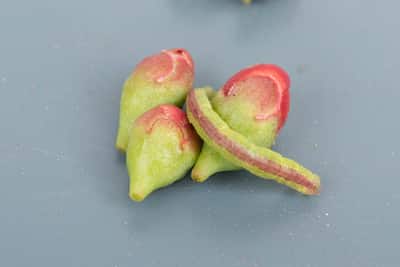
Caterpillar and chojubai flower buds
I don’t know what determines the color of the insect, but the hue was an exact match. What made it somewhat funny was that while the colors were perfect, the design was not – there are no straight red lines on chojubai, and seeing the caterpillar fully extended made it an easy mark. Hiding in a more relaxed pose would have helped it blend in better.
It had been a couple of weeks since I last inspected the tree so I took a few minutes to see if there were others. No more caterpillars, but I did find evidence of a caterpillar who had recently made it to maturity.
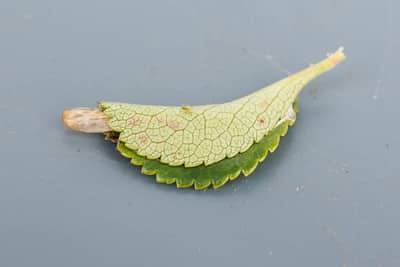
Pupa casing in chojubai leaf
I opened the leaf up to see what was inside and out popped a young caterpillar – the last thing I expected to see. I guess some moth found it to be a good spot to lay eggs.
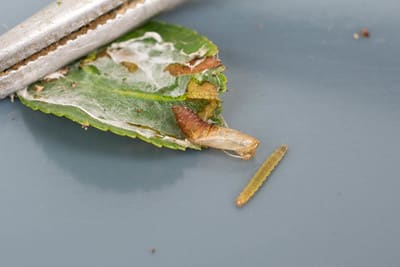
Pupa casing and young caterpillar
After inspecting the red/orange chojubai I checked out my white chojubai. This is what I was looking for: a cluster of leaves with the undersides turned outward – the tell-tale sign of infestation.
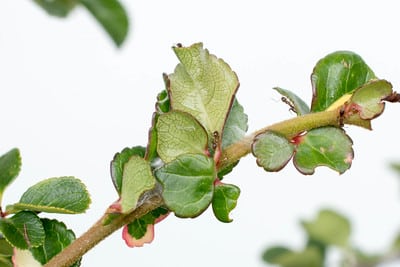
Caterpillar shelter
I was curious what color the critter inside would affect. I was not disappointed when I found the pale-green and yellow creature inside.
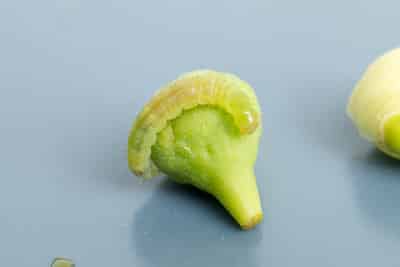
Caterpillar found on white chojubai
I didn’t find any other critters so I can avoid spraying for the time being, but I made a note to check the trees more frequently for caterpillars. Then I inspected my blueberry – not a bonsai – curious to find a caterpillar with blue markings. No such luck – plenty of caterpillars had come and gone, but I caught none in the act. Maybe next time.
Subscribe to Bonsai Tonight
New Posts Delivered Every Tuesday and Friday